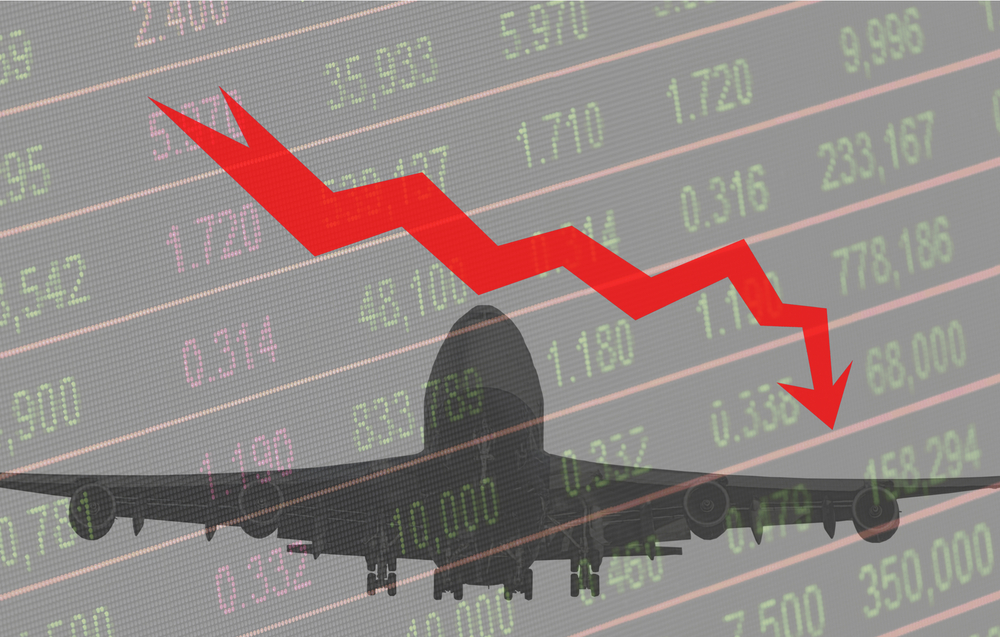Amazon Web Services Crash Causes Worldwide Chaos Across Social Media, Banks, and Airlines

Early Monday morning, the internet faltered. Amazon Web Services, better known as AWS, the invisible scaffolding that holds up much of the digital world, experienced a massive outage that stretched across continents. It began quietly, as these things often do: a few failed logins here, a loading wheel that spun too long there. But soon, that silence deepened. Websites slowed, apps refused to open, and millions of people around the world realized that the familiar hum of connection they relied on every day had suddenly gone still.
For several hours, the outage disrupted everything from airline websites to gaming platforms. Yet beyond the inconvenience and frustration lay something deeper: a collective reminder of how dependent modern life has become on the unseen systems that connect us. Beneath every message, purchase, and digital smile sits a sprawling network of cables, servers, and code, each performing its role with quiet precision. When one falters, the world feels it. The event wasn’t merely a failure of technology; it was a pause in our collective heartbeat, an opportunity to see the fragility of the systems we take for granted.

The Morning the Internet Glitched
Amazon’s AWS isn’t just another service; it is the hidden foundation that underpins millions of websites and applications. When it went down, the impact spread instantly across borders and industries. According to DownDetector, one of the first indications of trouble came from users in New York, San Francisco, and Los Angeles, who began reporting issues just after midnight. Within hours, the wave reached Europe. Amazon, Snapchat, and Facebook all began to stutter, while in the United Kingdom, customers of Lloyds, Halifax, and the Bank of Scotland discovered that their banking apps and websites would not load. Suddenly, the digital infrastructure that powers both leisure and livelihood had become unpredictable.
By 4:26 a.m. Eastern Time, Amazon engineers confirmed that they were seeing “significant error rates” in their DynamoDB endpoint in the US-EAST-1 region, located in Virginia: one of the internet’s most vital hubs. The cause, they later explained, was related to increased error rates and DNS resolution failures within their data systems. For most users, the explanation didn’t matter; what mattered was that their screens were blank and their systems unresponsive. For businesses, the consequences were tangible: delayed flight check-ins, interrupted customer orders, and broken communication chains. What began as a technical problem deep within a server room had, within hours, become a global event, one that made even the smallest error feel monumental.

The Domino Effect: Who and What Was Hit
The reach of AWS is vast, and when it falters, its effects ripple far beyond the company’s own ecosystem. Social media giants such as Snapchat, Reddit, Facebook, and WhatsApp experienced widespread disruptions, leaving users unable to send messages or refresh feeds. Popular games like Fortnite, Roblox, and Clash of Clans went silent, locking millions of players out mid-session. Productivity tools such as Zoom, Microsoft365, and Slack were hit too, their outages interrupting meetings, classrooms, and remote work across time zones. Even dating apps like Hinge and household devices like Ring doorbells and smart cameras reported failures.
But it wasn’t just about personal inconvenience. The outage extended into critical systems. Airlines such as Delta and United experienced delays in booking and check-in processes, while in the United Kingdom, major banks saw online services freeze, and government websites, including HMRC and Gov.uk, struggled to load. Telecommunications providers and even McDonald’s ordering systems were briefly affected. DownDetector reported that almost half of the outage complaints originated on the U.S. East Coast, though users from as far as Singapore and Paris joined in the global chorus of frustration. It was a stark reminder of how intertwined the world has become. The same cloud that stores photos and powers streaming also carries our health data, financial transactions, and public infrastructure. One disruption doesn’t just inconvenience:it exposes the intricate web that ties modern civilization together.

Amazon’s Response and the Science Behind the Glitch
Amazon’s engineers moved quickly, tracing the issue to a problem with DNS, or Domain Name System, which acts like the internet’s address book. DNS converts familiar website names, like amazon.com, into the numeric IP addresses that computers use to connect. When it fails, it’s as if the map between names and locations disappears, leaving users stranded at the doorway with no directions inside. The issue specifically involved the DynamoDB database service in the US-EAST-1 region, which powers a massive amount of global web traffic.
By late morning, AWS confirmed that the “underlying DNS issue has been fully mitigated,” though users continued to experience some residual delays as systems caught up from the backlog. For most, the disruptions were temporary; for engineers, the recovery process was a delicate dance of monitoring, diagnosing, and patching. AWS released periodic updates throughout the day, acknowledging the scale of the issue and thanking users for their patience. For a company that supports everything from NASA’s cloud data systems to Netflix’s streaming servers, transparency and rapid recovery were crucial. The event revealed just how complex the modern internet truly is:not a single, monolithic structure but a delicate network of interdependent systems where one small failure can trigger global consequences.

The Hidden Lesson in a Digital Breakdown
For millions of users, the outage was a frustrating hiccup in an otherwise normal day. But beneath the irritation lies a valuable insight about our collective relationship with technology. We have grown so accustomed to the seamlessness of connection that we rarely stop to think about how fragile it all is. The outage served as a reminder that our virtual world, vast as it may seem, still relies on very physical systems:cables, energy, and human expertise. It showed that even the largest and most sophisticated infrastructures are not immune to failure.
There’s also a deeper, more personal reflection here. The event is a metaphor for our own lives. Just as technology breaks, so do we. Just as systems crash and recover, we too face moments of disruption that force us to pause, recalibrate, and rebuild. The AWS outage was a mirror held up to modern society, reflecting how we deal with disconnection: whether digital or emotional. Do we panic, or do we investigate and restore? Do we curse the inconvenience, or do we use the stillness to reflect? These questions are as relevant to individuals as they are to engineers. In both systems and souls, resilience begins with understanding.
Why Resilience Matters — Online and Within
In the technology world, resilience means the ability to recover swiftly after failure. In human terms, it’s the same idea: the strength to bounce back, the wisdom to learn from disruption, and the courage to rebuild even stronger than before. When AWS stumbled, its engineers didn’t despair. They traced the cause, communicated transparently, and worked through the night to restore balance. That process mirrors how we can approach our own setbacks:not with panic, but with patience and curiosity.
The outage reminds us that resilience is not the absence of failure, but the ability to continue functioning despite it. It is the quiet decision to keep going, even when the screen goes dark. Technology, like life, thrives on maintenance, feedback, and adaptation. A system that never fails is a system that never grows, and the same is true for people. When things fall apart:when the connection drops, when plans collapse, when something vital stops working:that’s not the end of the story. It’s an opportunity to rebuild with greater awareness. The AWS engineers fixed their servers; we can fix our habits, our patience, our connection to what truly matters.

The Bigger Picture: A World Built on Clouds
According to Synergy Research Group, AWS currently holds about 31 percent of the global cloud market, with Microsoft Azure and Google Cloud close behind. Together, these platforms support everything from hospitals and governments to streaming services, finance systems, and even personal fitness apps. The convenience of this digital ecosystem is undeniable. Yet the outage highlighted its underlying fragility. When a single region experiences failure, the consequences ripple across the planet.
This event has reignited global discussions about decentralization and the importance of digital redundancy. Experts argue that industries and governments must invest in more distributed systems: networks that don’t rely on a single provider or data center. Diversity, whether in nature or in technology, ensures survival. When everything depends on one cloud, one cable, or one region, failure becomes inevitable. The outage from a small data center in Virginia wasn’t just a technical glitch; it was a symbol of the imbalance in our global infrastructure. It reminded the world that innovation must evolve alongside responsibility, and that true progress means building systems that can bend without breaking.
Conclusion: Beyond the Cloud
The AWS outage was temporary, but its message endures. It reminded us that our digital lives, vast as they seem, are still built on human effort, human error, and human ingenuity. Every line of code, every server rack, and every connection is maintained by people:thinkers, builders, and dreamers:doing their best to keep the modern world running. When something breaks, it is not the end of connection but an invitation to rediscover it.
Maybe next time an app freezes or a page won’t load, we can take a moment to breathe instead of rushing to refresh. Maybe we can remember that true connection doesn’t come from fiber optics or data centers but from the awareness and attention we bring to each moment. The digital world gives us power, but the human world gives us purpose. And perhaps that is the real lesson buried inside the outage: in a world built on clouds, it is grounding that keeps us whole.
Loading...

